Our Sapphire Guide: What they are, where they come from and how to buy
Sapphire is known the world over for it’s striking and vibrant color making it the most popular precious gemstone for jewelry after diamond. Used in jewelry for thousands of years, Sapphire remains a stylish and sought-after stone, particularly for engagement rings.
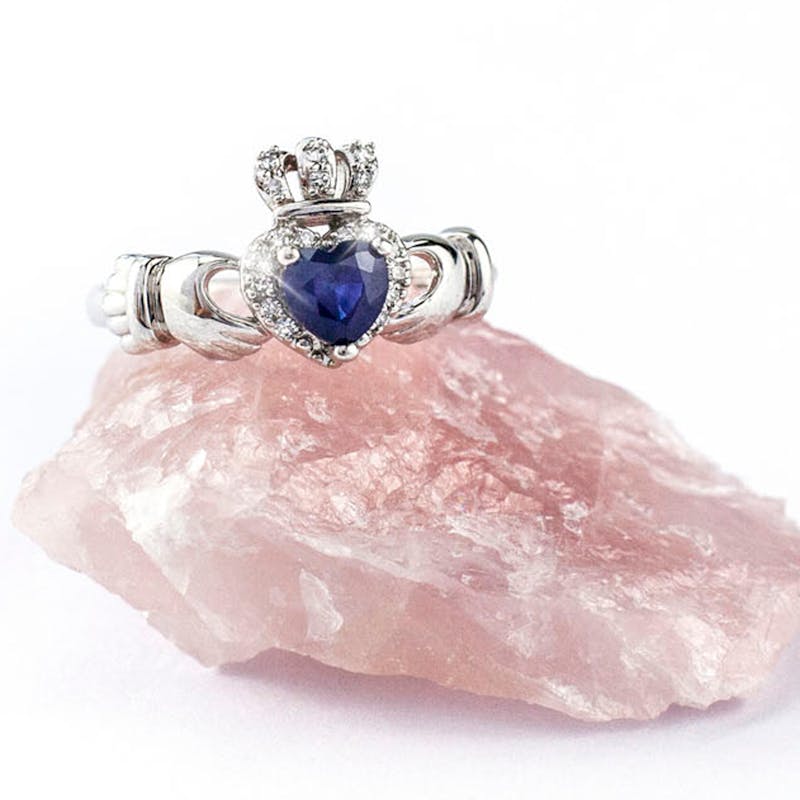
If you are thinking about purchasing a special piece of sapphire jewelry from us here at My Irish Jeweler or anywhere else for that matter, you may want to familiarise yourself with the background of this vibrant stone before you buy.
We have spoken to gemologists, mineralogists and drawn on our 50+ years of experience in the jewelry trade to collect together our buying tips, background and history for our sapphire guide. This guide will give you answers on:
- What is sapphire?
- Where do sapphires come from?
- What is the history and symbolism of sapphire use in jewelry?
- What is the best jewelry for sapphire?
- How is sapphire graded?
- How to care for sapphire?
- Our sapphire buying Tips
And as ever if you have any questions about sapphire or any of our jewelry please do get in touch by email, phone, or by booking a virtual appointment to see our jewelry.
What is Sapphire?
Sapphire is a beautiful and exceptionally hard gemstone variety of corundum and it is the birthstone of people lucky to be born in September.
The word Sapphire conjures up an image of a deep blue gem for many. However sapphires can be colorless or any color of the rainbow except red. Red "sapphire" is actually another coveted precious gem, Ruby! Sapphires in any color but blue are called “fancies.”
This rainbow of colors is caused by different mixtures of elements when a sapphire is formed. Iron can result in a yellowish stone, vanadium will give a purple hue, and the most popular blue variety of sapphire owes its existence to the element titanium. These color differences can be important too as it is one of the key grading factors for sapphire and so has a big impact on price. Read on to find out more about how Sapphire is graded.

Where do Sapphires come from?
Corundum is typically formed in areas where hot molten rock, called magma, cools slowly, over very long periods of time, 10 Km or more below the Earth’s surface. The conditions for this to happen can be quite rare, and having these rocks exposed at or near the surface so gem quality sapphire can be extracted is rarer still. The slow stable cooling can be interrupted by changes in pressure or other factors resulting in inclusions in the crystallizing sapphire. This process gives natural sapphire its beautiful colors and characteristics, with no two stones alike.
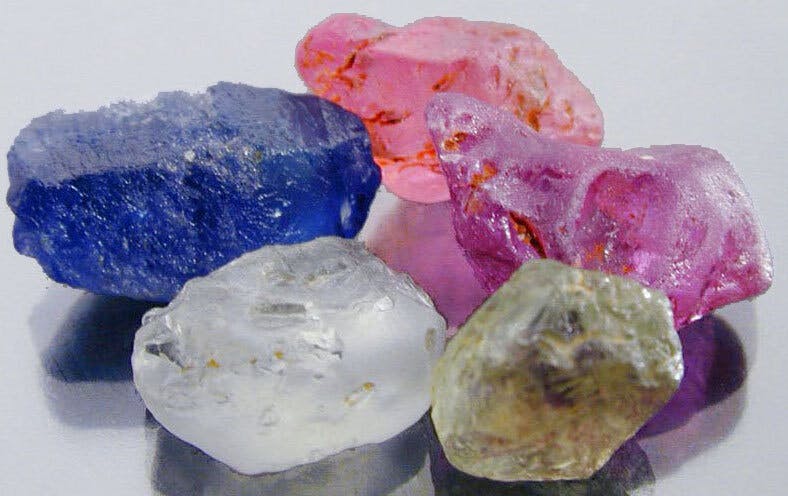
It's unsurprising that finding large, relatively clear, gem quality sapphire is exceedingly rare. But when they have time and the right conditions to grow, sapphire forms elongated hexagonal shaped crystals that look a little like columns. These elongated crystals can then be cut into any shape to suit jewelry. Round cuts are the most popular despite quite a bit of waste from a rough sapphire.
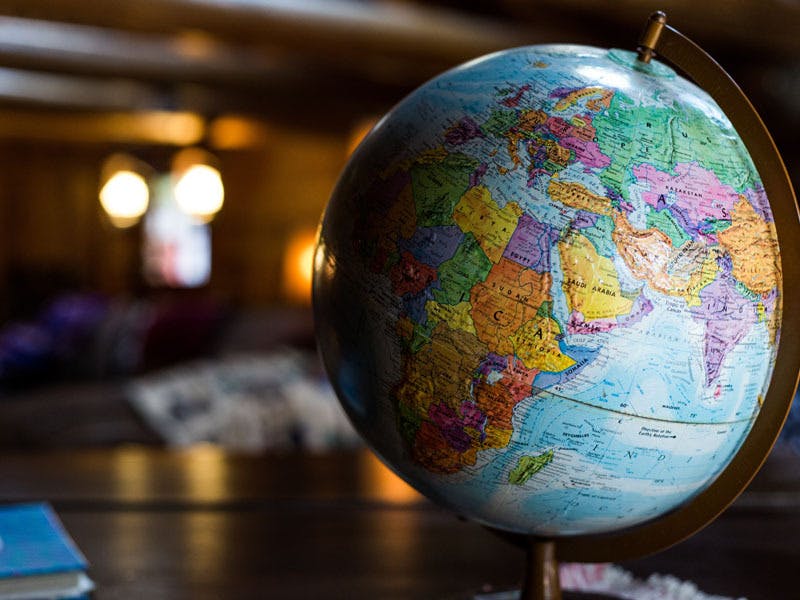
Kashmir, Myanmar and Sri Lanka are the three big locations for sapphire historically. But gem quality sapphire is now also found in Australia, Cambodia, Madagascar, Thailand, and Montana in the United States.
What is the history and symbolism of Sapphire in Jewelry
This beautiful gemstone is thought to get its name from the ancient Greek word sappheiros and the Hebrew sappir, which was used to describe blue stones like sapphire.

The wealthy and powerful of ancient Greece and Rome believed that blue sapphires protected their owners from harm and envy and they also wore sapphire for guidance.
Buddhists believed sapphire brought spiritual enlightenment, while Hindus used it during worship. Ancient Persians believed the earth rested on a giant sapphire, which made the sky blue. And early Christian kings cherished sapphire’s powers of protection in the Middle Ages, when the gem was thought symbolize heaven, attracting divine favor, loyalty and wise judgment.
To this day many consider sapphire a gemstone that speaks to the soul. With its classic rich color evoking a clear blue sky or a calm blue ocean, some feel they confer a sense of serenity, purity and depth to the wearer.
These beliefs along with its beauty and rarity made sapphire a popular choice for royalty. Sapphires can be found in the crown jewels of almost all royal houses. And so, over time sapphire has also become synonymous with nobility. Empress Josephine was famously gifted a diamond and sapphire moi-et-toi engagement ring. This gift from Napoleon was auctioned off to an anonymous buyer for close to 1 million dollars in France in 2013.

One of the most notable royal sapphires is also one of the most recent - the spectacular 12 karat blue stone surrounded by a diamonds halo in the sapphire engagement ring worn by Princess Diana. This ring now famously sits on the finger of Catherine, Duchess of Cambridge, after she was given it by Prince William on their engagement.
What is the best jewelry for sapphire?
Sapphire is thankfully not just for royalty these days. The enormous gemstones that adorn crown jewels and the like still command eye-watering price tags, but sapphires of 1 karat or under are a much more accessible yet striking stone that looks stunning in any type of jewelry.
Sapphire is exceedingly hard and second only to diamond, making it an ideal gemstone for everyday wear. Well made sapphire jewelry will last a lifetime and are certainly future family heirlooms!
Which Metal pairs best with Sapphrie?
With its rainbow of color options, Sapphire is a flexible stone that can pair perfectly with any metal. The rich velvety blue of sapphire has a classic look when paired with yellow or rose gold.
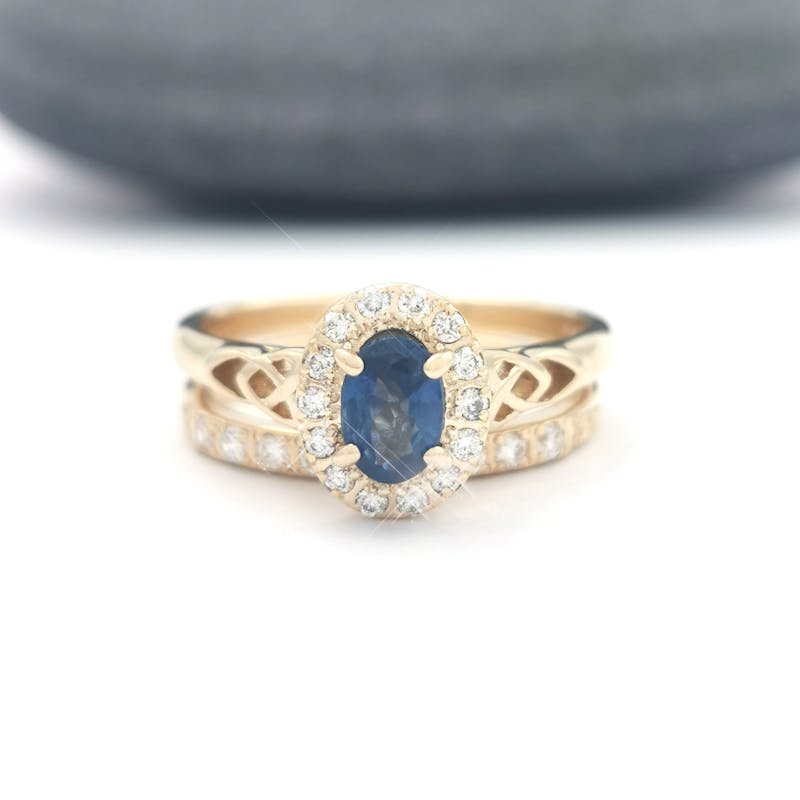
The warmth of the metal is a striking contrast to the cool tones of the stone. White gold or platinum reinforces the cool and refined air of this stone and is undoubtedly stylish choice that really allows sapphire to shine, particularly if also paired with diamond.

Sapphire Engagement, Wedding and Occasion Rings
Paradoxically given its long history in royal jewelry, sapphire is now considered quite a modern choice for an engagement ring. Following the Duchess of Cambridge’s lead and Princess Diana before her, many are now choosing a Sapphire engagement ring. With several celebrities recently seen sporting sapphire sparklers, many have tipped this stunning stone to make significant gains on diamond engagement rings in the popularity stakes.
This is hardly a surprise given there are Sapphire engagement ring options to suit all styles, budgets and tastes. The classic Sapphire of rich blue, really makes a big impact and draws the eye. A beautiful stone no matter the size, Sapphire pairs exceedingly well with diamond, making a multistone, Halo, or cluster setting an excellent choice.

Given their rich symbolism they are also a deeply meaningful choice set in a stunning Claddagh ring which has it’s own romantic backstory.
Sapphire is also traditionally used to mark 45th wedding anniversaries and like true love, this stone endures. Sapphire is always a romantic choice for occasion rings, including wedding bands, anniversary rings or rings to mark big birthdays.
Sapphire Necklaces and Pendants
Sapphires also lend a touch or romance as well as a vivid pop of color to a pair of earrings or necklace, perfect for a special gift for a birthday, particularly those in September.
Often blue sapphire is paired with a white gold, silver or platinum, but it is a versatile stone that also works equally well with rose and yellow gold for a vintage charm and a classic look.
How is sapphire graded?
Just as with diamond, or emerald, sapphire is graded on the basis of the 4 c’s: color, clarity, cut, and karat weight. However unlike diamond, color is by far the most important factor in determining the value of precious gemstones with vibrant hues, including sapphire.
Color
Color has the greatest influence on a sapphire’s value. This can get a little confusing given sapphire can be found in almost every color of the rainbow. So the main thing to focus on here is the quality of color in a sapphire. The best sapphire has a strong to vivid color saturation, regardless of the hue. It is these factors, hue and saturation, along with tone that determine the quality of color in a Sapphire.
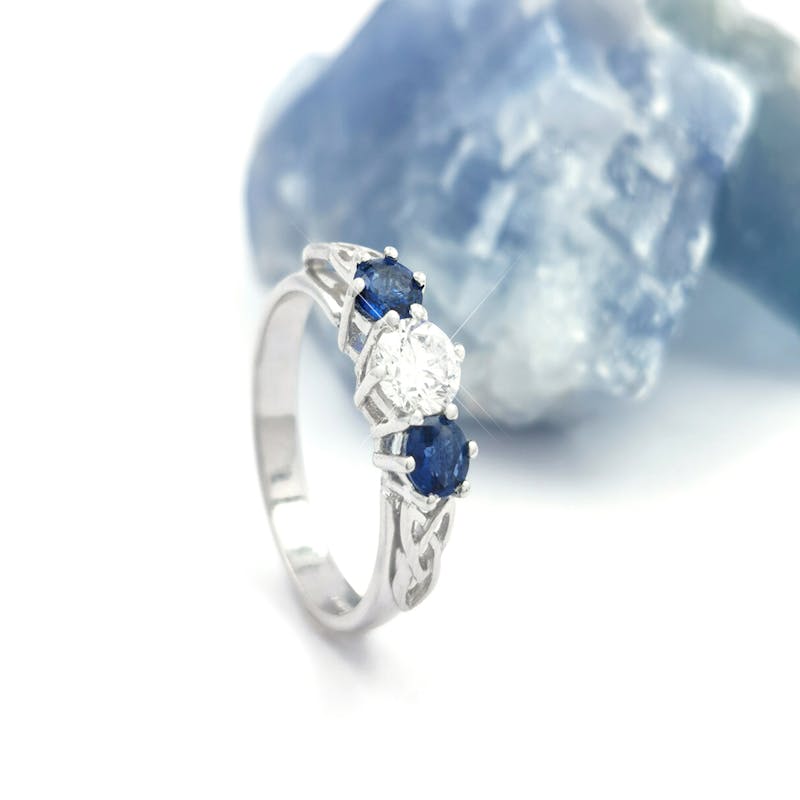
Hue
When most people think of the color of a gemstone, they are usually thinking of hue. For sapphire, the classic hue is a velvety rich blue and these stones typically command the highest prices. But even blue sapphire can have hints of green or purple. Padparadscha sapphire (salmon or sunset color) can also command an eye watering price given it’s rarity with pink, purple, orange, yellow, green, and even colorless varieties available. Each hue has its own color range and will appeal for different reasons.
Saturation and tone
These two factors are linked. Saturation is a measure of how intense the hue is from a dull color to a rich vivid one! A gem with higher saturation might appear darker in tone. While a completely clear gem would have zero tone - tone is a measure of a gem's relative lightness or darkness. Most people are drawn to vivid sapphire with a medium to medium dark tone - the “goldilocks” sapphire with a typically rich color that has no grey undertones to dull the saturation.
But really color for sapphire comes down to preference and what catches your eye and makes your heart beat a little stronger! Some prefer sapphire of deep blue hue with a violet or purple tinge, others might choose a stone with a lighter hue. The best sapphire color is whichever one makes you stop in your tracks!
Given the importance of color for sapphire pieces in particular, we take a great deal of care and time over the photography of our jewelry. And of course we offer our appointment service for our customers so they can see a piece with their own eyes before purchasing!
Clarity
Clarity is a measure of how many inclusions are in a stone and how transparent it is. A stone with perfect clarity would be entirely transparent. But this is a funny one for sapphire as unlike diamond, they typically have quite a few inclusions. Of the “big three” of colored gemstones, sapphires generally have better clarity than ruby or emerald. And for all colored gemstones, if you don’t see any inclusions, you may begin to wonder if you are looking at a lab created stone.
Sapphires with very few inclusions and so extremely high clarity are exceedingly rare, and very, very valuable putting them out of all but he highest budgets. However inclusions in sapphire can actually be a defining feature of a stone and can produce some lovely visual effects that sapphire is coveted for.
Long thin mineral inclusions called needles can create a pattern called silk when they occur in intersecting groups. It is these inclusions that scatter light in the stone giving sapphire a beautiful velvety appearance.
So you don’t need to be concerned about inclusions or hunting for exceptional clarity so long as the stone is not too dark for your taste. Any reputable jeweler will also not work with stones that are heavily included, as that can threaten the stone’s durability making it unsuitable for jewelry.
Cut
A high quality sapphire will look stunning no matter the cut. It is often cut with a brilliant pattern on the crown to get the best play of light that will show of the color to best effect.

But a round brilliant cut is not the only option for a striking sapphire piece and typically getting the best color is the main priority. Given the variety of color in sapphire, each stone is typically cut to show off tone, saturation and hue, whether that be in a round, emerald, heart, oval or cushion shape.
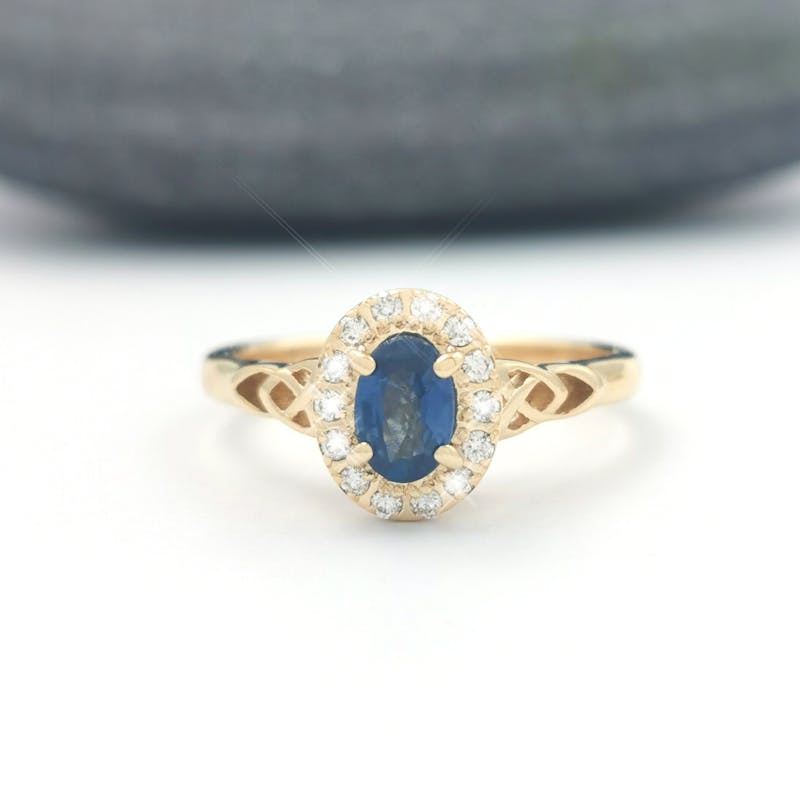
Oval and emerald cuts have the benefit of mirroring the shape of the rough stone reducing wastage. While round, heart and cushion cuts can really enhance color, making sure the stone packs a vivid punch.
Karat Weight
You might expect that bigger is better and by extension more expensive right? When it comes to sapphire, this needn't be the case. Karat weight (size) is a factor in determining value, but again color dominates.
Sapphire can range in size anywhere from a few points to hundreds of karats. However, most high-quality sapphires is typically under 1 karat for all but those on the highest budgets.. And given the fact that they are quite heavy stones, a sapphire of the same karat weight as a diamond will be a little smaller in size.
We think a smaller sapphire with excellent color is better than a larger one with poor color quality. We also believe that with that vivid sapphire color, a little can go a long way to make a big impact. Our designs use sapphire with excellent color and we often pair them with dazzling diamond for pieces that will turn heads.
Typical and more accessible sapphire for jewelry range in size from a few millimetres for stones used in decoration (0.01 to 0.50 karat) while 0.5 to 1 karat stones make excellent center stones in marquee pieces of jewelry.
For those that want a really big sapphire, keep in mind that their price skyrockets over 1 karat. So if size is your key characteristic for a gemstone and you don’t have the budget of a Royal or a Hollywood star, perhaps natural sapphire is not for you!
How to care for sapphire?
Sapphire is one of the harder gemstones out there second only to diamond. It’s structure is very hard wearing making it ideal for engagement rings and pieces that will be worn every day. But even the toughest jewelry can be damaged and be dulled by the dirt accumulated from daily wear. So if you are keen to keep your sapphire piece looking as dazzling as the day you bought it we recommend you:
Avoid
Always protect your stone and indeed the precious metal setting from harsh chemicals. We recommend taking your sapphire jewelry off and stashing it somewhere safe before applying makeup, doing the dishes, cleaning the house or taking a dip in a chlorinated pool.
Clean
With wear, any piece of jewelry gets dirty and the same is true for sapphire. To keep that blue dreamy, clean the piece by hand using water and a mild soap. Make sure to dry thoroughly after cleaning with a soft cloth and don’t leave a sapphire sitting in water as this can damage the setting. Ultrasonic cleaners are ok to use but all the jostling around they produce is not something to subject your piece to with any regularity. Hand cleaning is usually the safest and best option.
Store
Ironically loose jewelry boxes are TERRIBLE places for fine jewelry, including sapphire! When not wearing your sapphire jewelry, it is best to store it alone in its own protective box or bag. This will protect the sapphire from other harder stones like diamond that could scratch it and will protect softer materials (like gold) from being damaged by the sapphire. We recommend cleaning the piece before storing for any significant period of time to ensure there are no moisture or chemical residues there that will react with the metal over time.
Our Sapphire Jewelry Buying Tips
Buy from a trusted source
Our cardinal rule for any jewelry purchase. Whether that is from us here at My Irish Jeweler or another source, make sure you work with a reputable business. A reputable jeweler will have excellent reviews and recommendations across several independent platforms (e.g. Facebook, Google, reviews.io etc.). Make sure to check them to see experiences of past customers. This will give a reflection of what you may expect if you give them your custom.
If you want to be doubly sure of who you are dealing with, arrange an appointment to speak to them before you buy. A reputable jeweler will be happy to chat to you, answer any questions you might have and show you the piece you are interested in to set your mind at ease. If you are making a big purchase it is understandable to want to know who you are buying from - You can book an appointment with us here.
Know your color
As you know by now, color is all important for sapphire. We advise looking for a piece with a stone that is vibrant and a hue and tone you enjoy whether that is blue or or another of the rainbow of color options with sapphire! Most importantly you don’t want your sapphire to look too dark or light and definitely not washed out or dull! To that end, make sure you can see the color of the stone in photographs, in person or in an online appointment. But don’t be too worried about technicalities. If you love the piece that is the main thing!
Think about Cut
Sapphire can look spectacular no matter the cut and has plenty of impact even at smaller karat weights. Make sure the gem reflects light well and has brilliant sparkle. A poor cut will make a stone too dark or give it zones that may look unappealing. Again it is a useful idea to get a good look at the piece you are buying. Shapes like oval, emerald or pear will also maximise the size of the stone for budget with less wastage from the natural uncut sapphire, which typically has long barrel shaped crystals.
Balance Price vs Size
Quality sapphire can be expensive and their per-karat price increases exponentially as larger high grade stones are rare. As with any purchase we recommend setting a budget and sticking to it! A smart choice for those looking for a larger sapphire piece without the budget of royalty, can be a multi-stone or halo setting, with sapphire paired with diamond. As an added bonus sapphire and diamond are a match made in heaven.
Certificate of Authenticity & Value
Certificates are not the norm for purchasing sapphire and there is no standard certification process. However as an added reassurance for our customers we issue customers purchasing high quality sapphire pieces with a Certificate of Authenticity and value. But this is by no means required. The main thing is how the stone looks to you and that you are reassured that the piece you are purchasing is as described. For example that your natural sapphire is indeed natural!
Questions?
If you made it this far well done! You are now well on your way to becoming a sapphire expert and hopefully feel armed with the knowledge you need to make an informed purchase of quality jewelry.
We are proud to offer our customers a beautiful selection of sapphire jewelry designed and made here in Ireland. So if you are thinking that a sapphire piece might be for you, have a look at our selection or get in touch by email, phone, or by booking a virtual appointment. We would be delighted to answer any questions you might have.


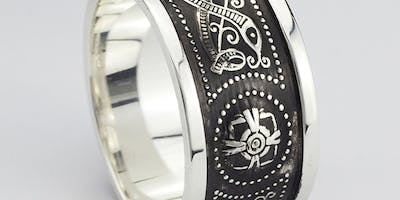

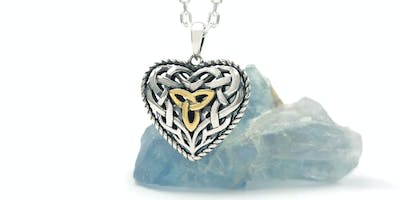
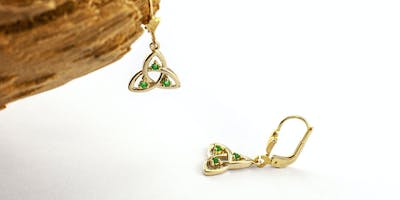

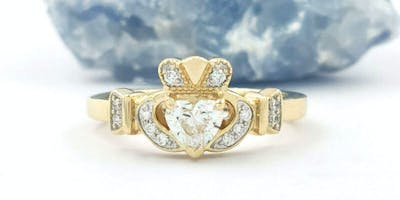
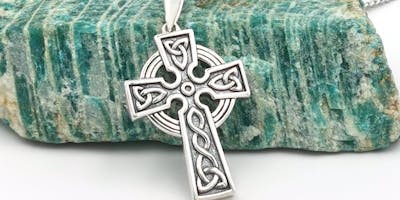
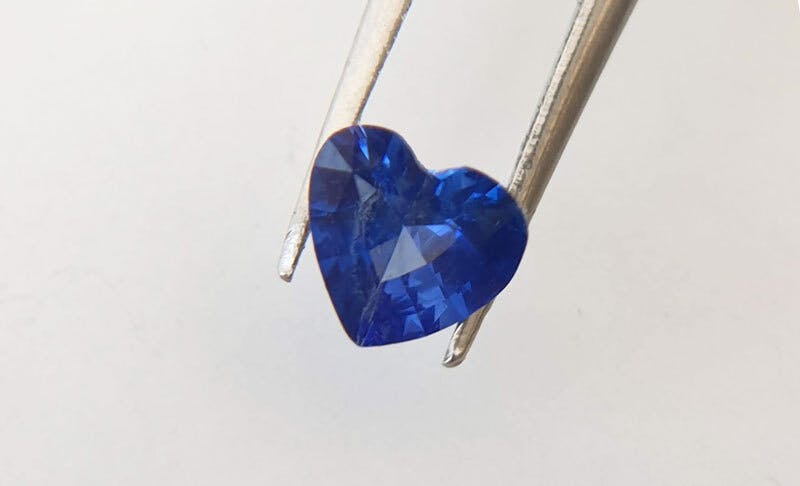

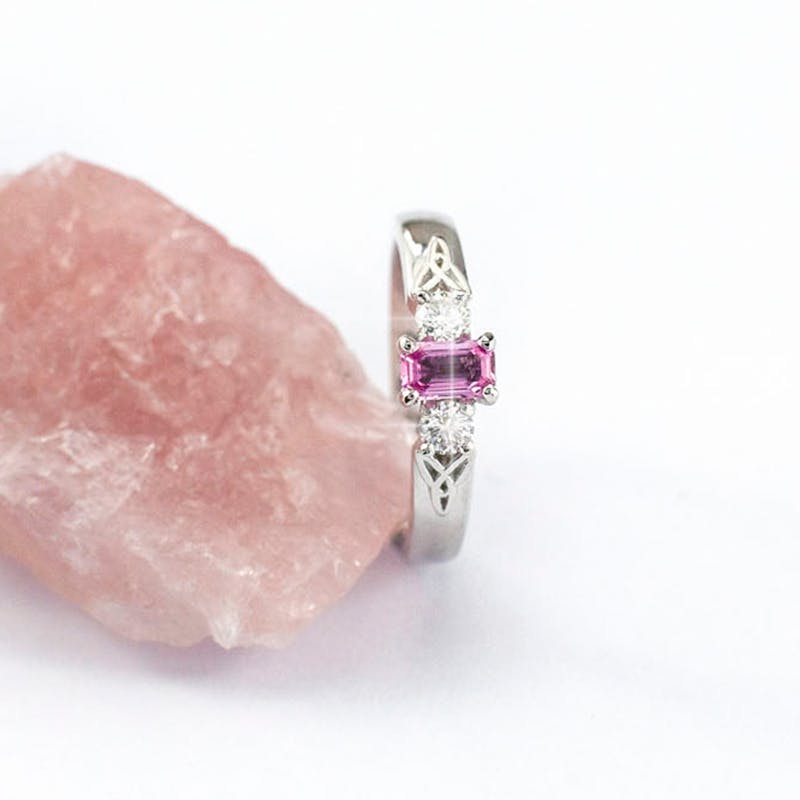
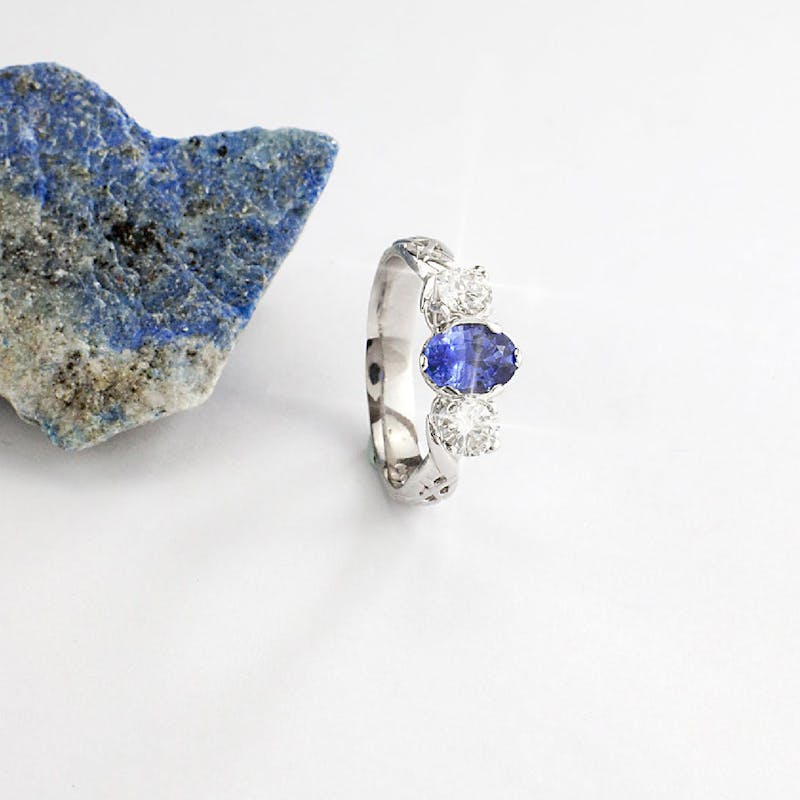

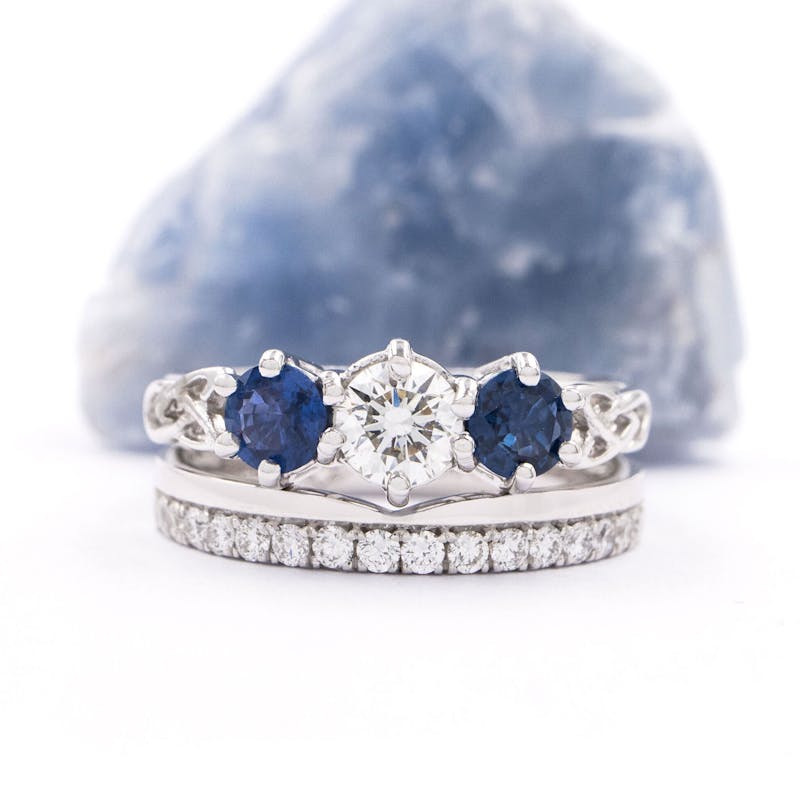
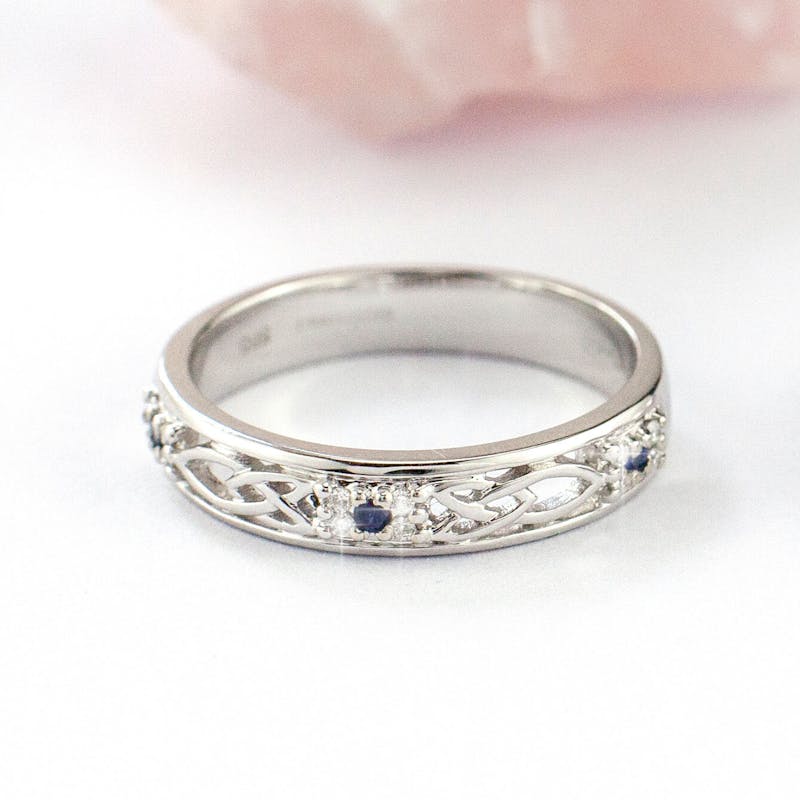


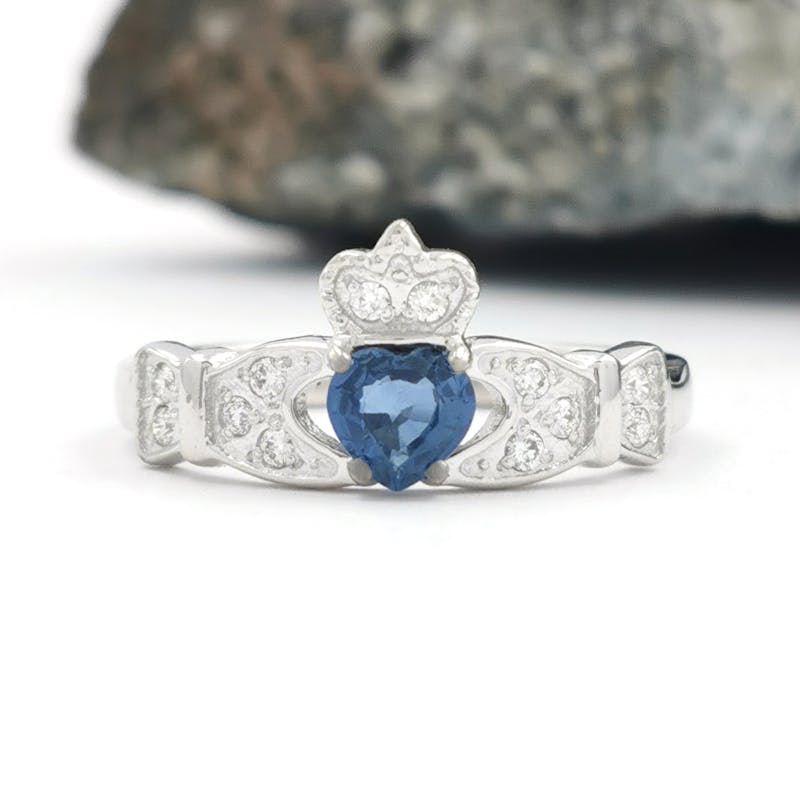
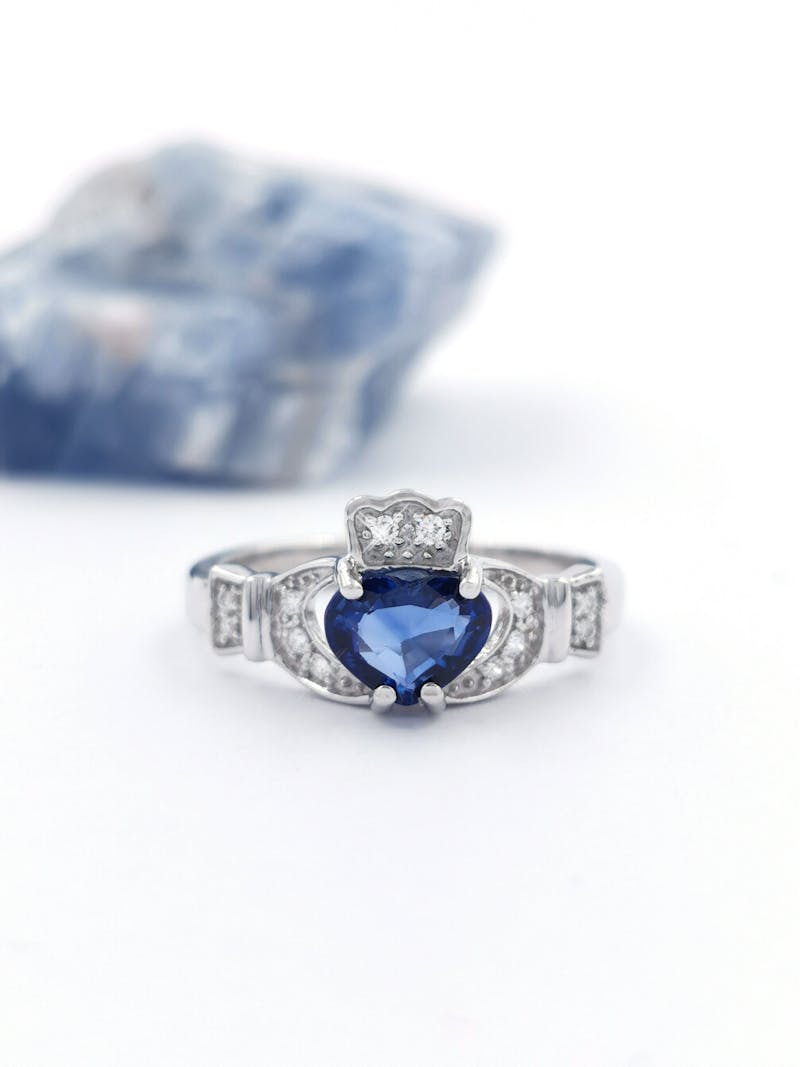
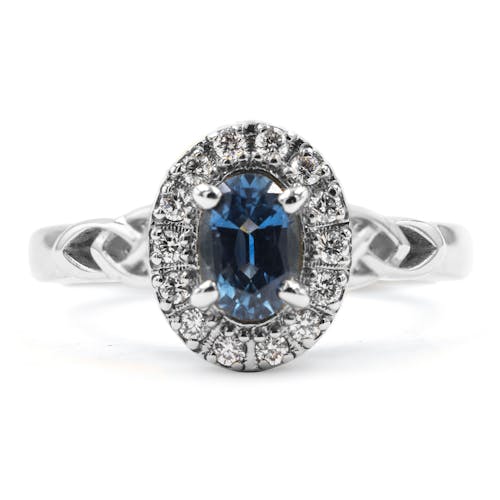

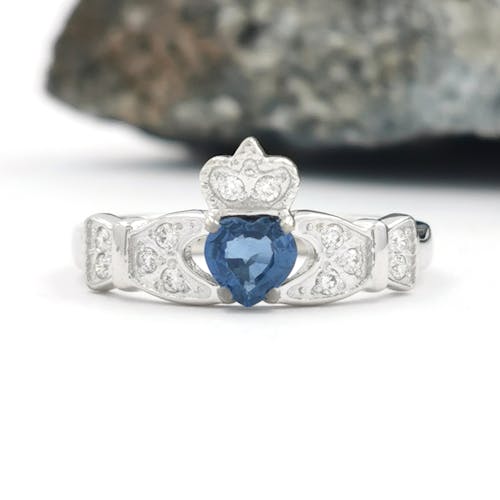
 Ask Gemma
Ask Gemma